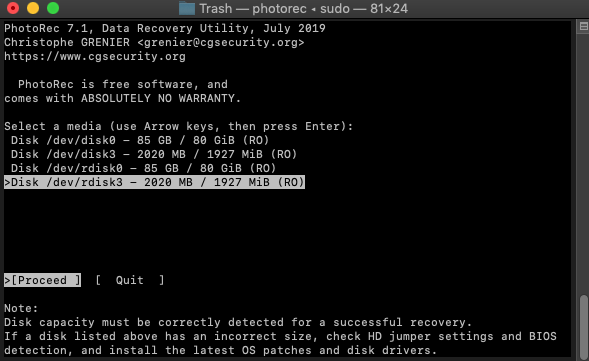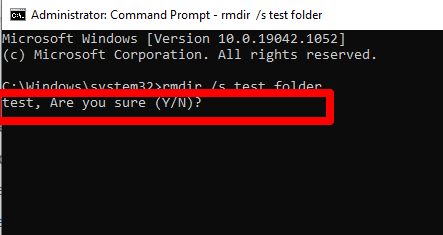
That's my current go-to for trashing files: Command-Delete to move files to the trash and Command-Shift-Delete to empty the trash. Now, you'll be able to use the standard three-button keyboard shortcut to empty the trash without needing to jump through the extra hoop of confirming your intention.Īnd the keyboard shortcut still involves three buttons, which makes it unlikely that you'll accidentally engage the command. Follow this answer to receive notifications. or other commands in place of -delete as show in previous answer. On the Advanced tab, uncheck the box for Show warning before emptying the Trash. To do this in the current directory you can do. You enter the command as m -R directoryname, where you substitute directoryname for the name of the directory you want to delete. If that four-button keyboard shortcut is too cumbersome or difficult to remember, you can change a setting in Finder's preferences to kill the empty trash confirmation.įrom the Finder menu option in the menu bar, choose Preferences. When you run the rm -R command on a folder, you're telling Terminal to delete that folder, any files it contains, any sub-folders it contains, and any files or folders in those sub-folders, all the way down. The keyboard shortcut Command-Option-Shift-Delete empties the trash while bypassing the confirmation dialog window. There are two ways, however, to skip the empty trash confirmation step. In either case, you will then need to confirm your intention to empty the trash.

Then to empty the trash, you can right-click on the trash can and select Empty Trash or use the keyboard shortcut Command-Shift-Delete. To move a file to the trash, you can drag it to the trash, right-click on the file and select Move to Trash or use the keyboard shortcut Command-Delete. It is this second confirmation step that keeps me from using Delete Immediately. OS X : type mv sfk-mac-64.exe sfk and chmod +x sfk then.
Mac command line delete file mac os x#
In either case, a dialog window will appear and asking you to confirm your intention to delete the file. open the Windows CMD command line, Mac OS X Terminal or Linux shell. At the top of the window, you will see the word Bash it stands for 'Bourne again. The command line shown is ComputerName:CurrentDirectory Username. That will find every instance of this Mac resource file and delete it. Or just type cmd in the Start Menu search box.) del /s /q /f /a. You can do this by mashing Win + R, then typing cmd.

A window will open, and you will see a command prompt ending with a. You can easily search and destroy them all using this command: (Open the command line first of course. You can use terminal by opening Finder > Applications > Utilities > Terminal.
Mac command line delete file how to#
With your file or files highlighted, you can use the keyboard shortcut Option-Command-Delete or open Finder's File menu and hold down the Option key, which changes the Move to Trash option to Delete Immediately. How to Open Terminal (Command Prompt) on Mac.

There are two ways to access the Delete Immediately command. But is Delete Immediately any faster than Move to Trash? Let's have a look. With OS X 10.11 El Capitan, Apple introduced a way to bypass the trash when deleting a file - Delete Immediately. And then when you accidentally open the Trash folder and realize how many files you have stashed there, you go ahead and empty the trash. With this option (or its shorthand -n notation), you will only see an output of the files that Git would remove - but no files are actually deleted.The tried-and-true method of deleting a file on a Mac is to drag it to the trash or right-click on the file and select Move to Trash. When a path to a directory is specified, the -r flag allows Git to remove that folder including all its contents. Using the -cached flag, the actual file on disk will not be deleted. By default, the git rm command deletes files both from the Git repository as well as the filesystem. Removes the file only from the Git repository, but not from the filesystem. But you can also provide multiple filenames (delimited by spaces) or even a wildcard pattern (e.g. Naming the file you want to remove can be as simple as providing the filename / path to a single file. /rebates/&252fhow-to252fdelete-language-files-on-mac.

The name of a file (or multiple files) you want to remove. You can now navigate folders using the Mac terminal to your heart’s content. Navigate Folders Using The Mac Terminal: Putting it all together. But deleting the file from the actual Git repository is a separate task, for which git rm was made. Use rm, rm -R, and rm -i to delete files and folders. It allows you to not only delete a file from the repository, but also - if you wish - from the filesystem.ĭeleting a file from the filesystem can of course easily be done in many other applications, e.g. The "rm" command helps you to remove files from a Git repository.


 0 kommentar(er)
0 kommentar(er)
